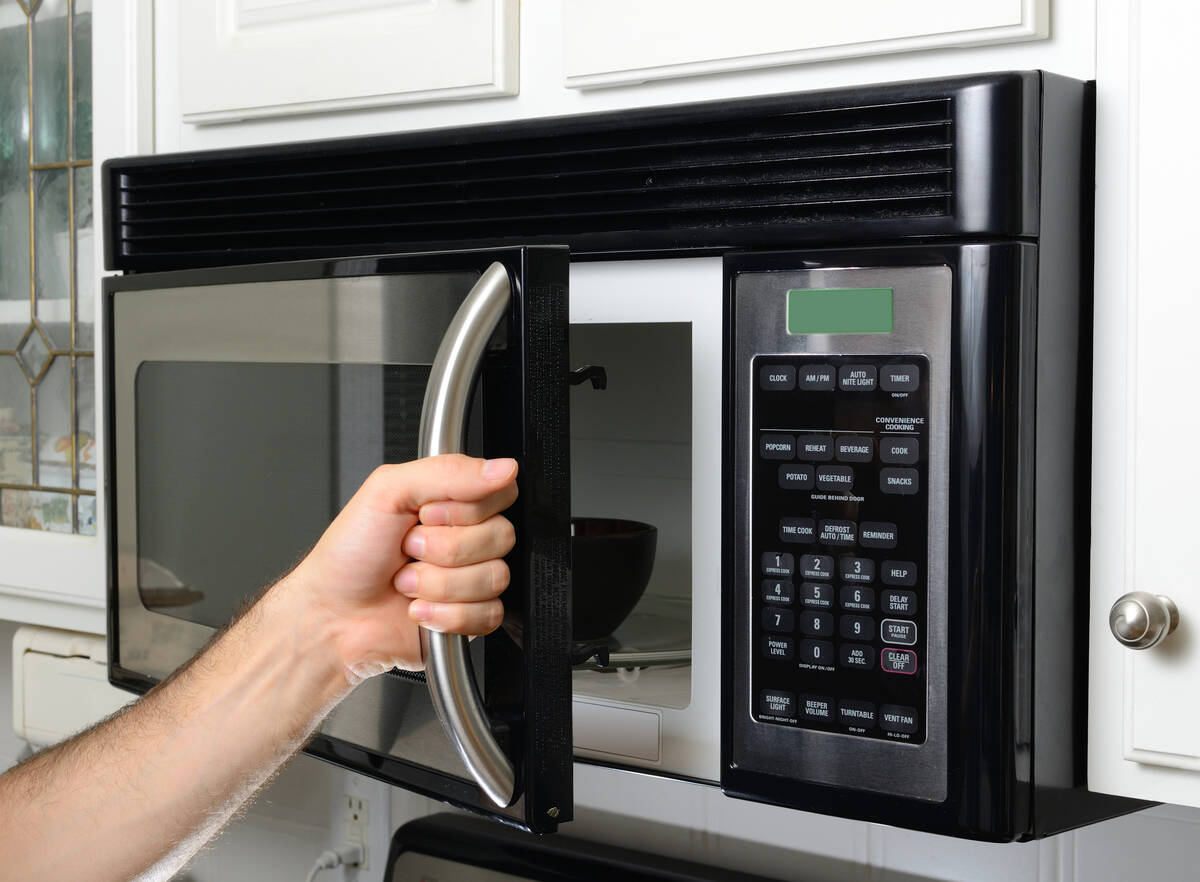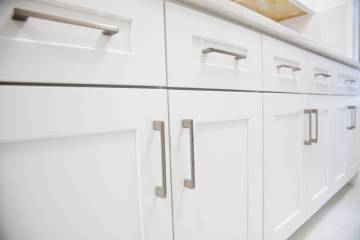No change in cabinetry to install microwave range hood
Q: I have a cheap range hood that is permanently stained and, as a bonus, it stinks. I want to replace it with a microwave oven/range hood combination, but I don’t see any ductwork in the cabinet above the hood. Do I need to change the cabinetry?
A: What in the world have you been cooking? Your current hood is permanently stained and it stinks? If you’re going to spend money on a new microwave range hood, you might want to invest in some new recipes as well.
To answer your question, though, you won’t have to change any cabinetry because microwave range hoods are uniform in width.
Plan on spending at least $250 for a low-end microwave/range hood, and about 1½ hours to install it.
First, you’ll have to remove the old range hood, then unplug the electrical cord in the cabinet above the hood. Next, unscrew the four screws (or less if the original installer got lazy) that hold the hood in place (usually one at each corner). Support the hood as you do this, then throw it as far away from the house as possible.
Your new microwave will come with a paper template, which you’ll tape to the wall and to the underside of the cabinet where the microwave will be mounted. The template shows where to drill holes in the wall to fasten the mounting bracket that supports the microwave. Under the cabinet, the template shows where to drill holes to allow the cord through and the location of the height adjustment screw.
There are two types of mounting brackets. One has “arms” on either side at the top, which the microwave slides onto. The other has a channel at the bottom that the base of the microwave rests in and is fastened with the height adjustment screw. Whichever bracket you have, you’ll have to secure it to a wall stud.
This is easy because a stud finder (about $10) will pinpoint the location. Mark the location on the template and pre-drill the holes according to the manufacturer’s instructions. The rest of the bracket will be held to the wall using toggle bolts, which are included in the package.
Insert the bolts through the holes in the bracket, then twist on the toggle nut just enough so it doesn’t fall off. Push the toggles through the pre-drilled holes in the wall.
As you turn the toggle bolt with a screwdriver, you’ll have to pull outward on the screw to engage the toggle and tighten the bracket to the wall.
If the stud doesn’t line up with one of the corner holes, secure the bracket to the wall stud using a wood screw (it’s also included) into one of the holes in the bracket that aligns with the stud.
Since there is no ductwork above the hood, you’ll be installing the microwave range hood so that it recirculates the exhaust, which is a fancy way of saying that it blows back into the room. However, there is a charcoal filter that the exhaust passes through before it is recirculated. By the way, your old hood probably smelled because you never changed the filter.
The microwave range hood comes ready for attachment to a ducted system. Since you have a ductless system, you’ll need to remove the blower and turn it according to the manufacturer’s instructions (don’t worry, it’s a matter of four screws).
If there was ducting, you’d simply attach the hood to the ducting.
Once the blower is oriented, attach the microwave to the bracket. This is awkward because you’ll have to thread the power cord through the hole in the underside of the cabinet while you support the microwave. There is a temporary pin that will hold the microwave in place until you permanently fasten it to the bracket and the cabinet. It’s much easier to have a helper support the microwave while you stick in the pin.
Make any final adjustments to the microwave then, while supporting it, remove the temporary pin and insert the height adjustment screw. You can close any gap between the top of the microwave and the bottom of the cabinet by tightening this screw.
Now you’re ready to plug in the hood and program the time. And next time you cook, don’t use so much oil.
Mike Klimek is a licensed contractor and owner of Las Vegas Handyman. Questions may be sent by email to handymanoflasvegas@msn.com. Or, mail to 4710 W. Dewey Drive, No. 100, Las Vegas, NV 89118. His web address is www.handymanoflasvegas.com.
Do-it-yourself
Project: Replacing microwave hood
Cost: From around $250
Time: 1.5 hours
Difficulty: ★★★























